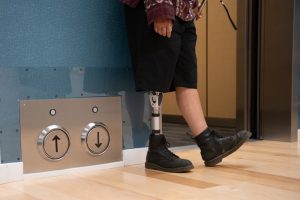In our previous blog, we explored the topic of disclosure and debunked myths about being open to a potential employer about your personal circumstances that may have affected your CV – but certainly not your potential! Today, let’s explore 3 example-based tips on describing gaps in your CV in a positive way.
 Let’s discuss ways how you can describe common concerns on a CV, such as low grades, gaps in education and lack of work experience. These examples are to help you describe your mitigating circumstances with a little more confidence. They are developed with the help of resources from MyPlus Student Hub, who support students about disclosure and being open about your disability or other mitigating circumstances.
Let’s discuss ways how you can describe common concerns on a CV, such as low grades, gaps in education and lack of work experience. These examples are to help you describe your mitigating circumstances with a little more confidence. They are developed with the help of resources from MyPlus Student Hub, who support students about disclosure and being open about your disability or other mitigating circumstances.
1) Be honest – and pay attention to your words!
The first step to describing your mitigating circumstances is of course being honest. You’ll want to communicate your situation in a fair way and frame your circumstances in a positive way that shows your understanding of the situation and views yourself with confidence.
Consider the different language used in the two examples. The first express reasons for low grades in a confident way. The second example frames the mitigating circumstances with words that suggest guilt or shame.
“I experience anxiety which affected my exams leading to lower grades. I did not fail these exams so it was not possible to retake them, please take this into consideration.”
“Unfortunately I suffer from panic attacks and that affected my exams leading to lower grades. I did not fail these exams and therefore couldn’t retake them, so I’m stuck with these grades.”
2) Practice a positive way to describe your circumstances
Now that you know the importance of wording, practice a few sentences that you can rely on, wherever you might need them. You can create ways to describe these with your Career Consultant, Disability Advisor, by yourself or with a friend – try out some different wording to see what you like best. Repeat your prepared sentences enough times for you to feel good and own your story.
Describing your circumstances has three parts: What was the situation you were or are in? What impact did this have? And most importantly, what skills or attributes have you developed as a result of this?
“I have a disability, and I have not obtained work experience. But I have developed communication and influencing skills in explaining my condition to my academic department and peers.”
“I became a full-time carer and took 2 years out of university. During this time, I developed resilience, confidence and adaptability.”
“Due to Covid-19, I took time off to look after my mental health. During this time, I focused on my wellbeing and developed new coping mechanisms and resilience, so that I could return to university the next term.

3) Think about why you are sharing information
Our third tip is to think about why you are sharing the information. Are you hoping to ask for adjustments to the recruitment process? Are you wishing to bring awareness? Or perhaps there is another reason. Whatever your personal reasons may be, knowing why you are sharing this information is connected to what you are asking the employer to do if you may need adjustments or flexible solutions in order to best succeed at the interview or during the work or internship experience.
To continue your learning, head to our KEATS, where you can find more information and career resources dedicated to disabled students. Also, our online courses help you identify what makes you employable which you can complete anytime, in order to self-reflect and help you build success on your career journey.